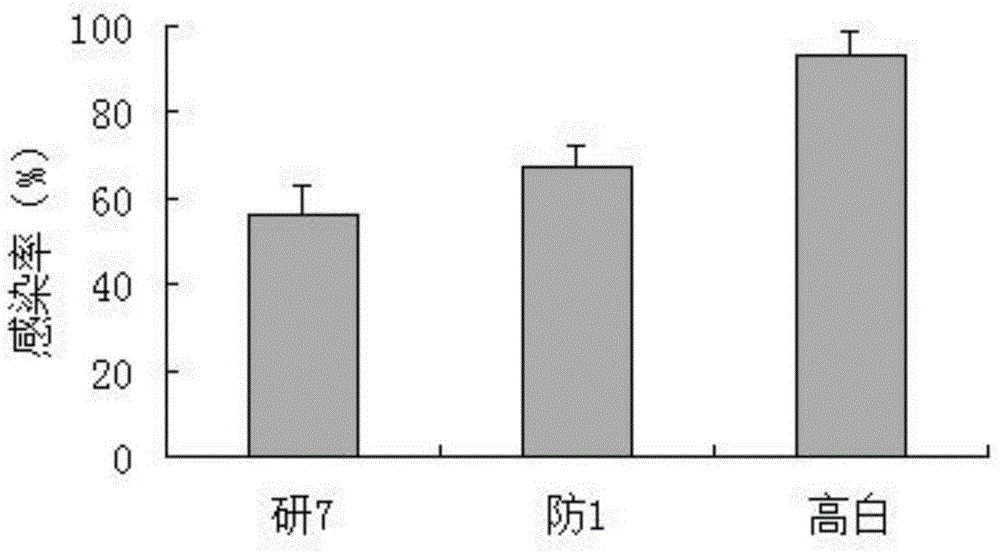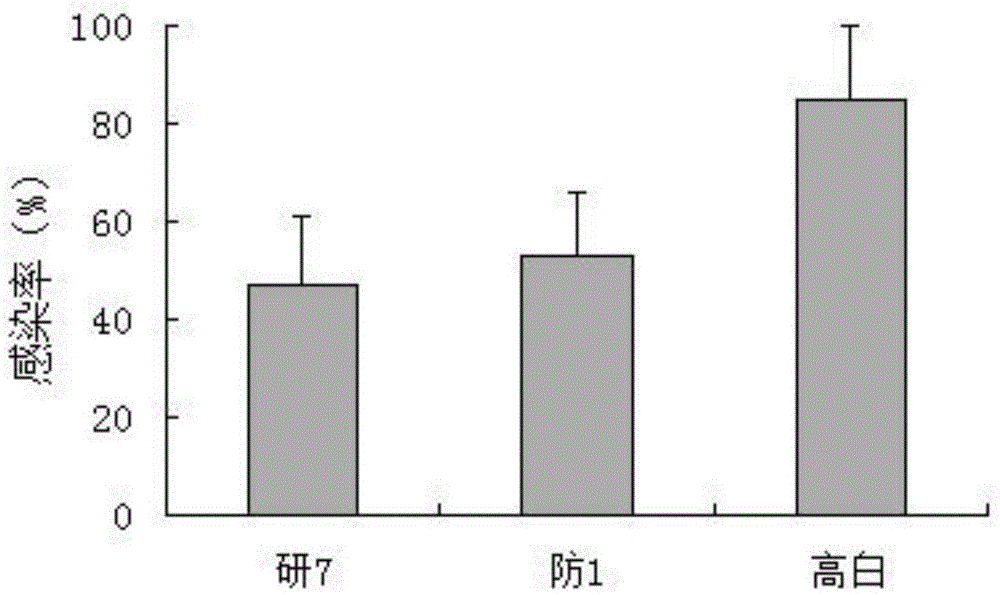Rapid screening method for pebrine resistant germplasms
A technology of silkworm microparticles and microsporidiosis, applied in the direction of microorganism-based methods, microorganism measurement/inspection, biochemical equipment and methods, etc., can solve problems such as errors in breeding result data and differences in pathogen intake, and achieve prevention Effects of cross-infection, guarantee of reliability, improvement of repeatability and credibility
- Summary
- Abstract
- Description
- Claims
- Application Information
AI Technical Summary
Problems solved by technology
Method used
Image
Examples
Embodiment 1
[0024] The concrete steps of this embodiment are:
[0025] Step 1: Select several kinds of silkworms for testing, namely Gaobai, Fang 1, and Yan 7, and raise them to the third instar silkworms. Select silkworms of uniform size and put them in a 28-hole insect breeding box, and place each silkworm in a single hole;
[0026] Step 2: Prepare mulberry leaf discs with a diameter of 1.0 cm with a mulberry cutting tool, use a pipette gun to draw 3-7 μl of the original solution of No. 6 pieces / mL, put into the rearing box after drying, one piece per head;
[0027] Step 3: After 4 hours, select the silkworms that have eaten the mulberry leaves as the silkworms for further experiments. Each strain is divided into 3 groups, and each group has 3 repeated areas, 50 in each area, and continues to carry out individual rearing;
[0028] Step 4: After 12 days, perform microscopic examination of silkworms to investigate the number of infected heads of each strain;
[0029] Step 5: record the ...
Embodiment 2
[0031] The concrete steps of this embodiment are:
[0032] Step 1: Select several kinds of silkworms for testing, namely Gaobai, Fang1, and Yan7, and raise them to the 3rd instar silkworms. Select silkworms with uniform size and put them into different insect breeding boxes according to different strains, and carry out group breeding;
[0033] Step 2: Prepare mulberry leaf discs with a diameter of 1.0 cm with a mulberry cutting tool, use a pipette gun to draw 3-7 μl of the original solution of No. 6 pieces / mL, after drying, put them into the rearing box with the amount of one piece per head;
[0034] Step 3: After 4 hours, divide each strain into 3 groups, each group has 3 repeated areas, 50 heads in each area, and each 50 heads are group-raised;
[0035] Step 4: After 12 days, perform microscopic examination of silkworms to investigate the number of infected heads of each strain;
[0036] Step 5: record the infection rate of each group, and understand the resistance of vari...
PUM
| Property | Measurement | Unit |
|---|---|---|
| diameter | aaaaa | aaaaa |
Abstract
Description
Claims
Application Information
 Login to View More
Login to View More - Generate Ideas
- Intellectual Property
- Life Sciences
- Materials
- Tech Scout
- Unparalleled Data Quality
- Higher Quality Content
- 60% Fewer Hallucinations
Browse by: Latest US Patents, China's latest patents, Technical Efficacy Thesaurus, Application Domain, Technology Topic, Popular Technical Reports.
© 2025 PatSnap. All rights reserved.Legal|Privacy policy|Modern Slavery Act Transparency Statement|Sitemap|About US| Contact US: help@patsnap.com


